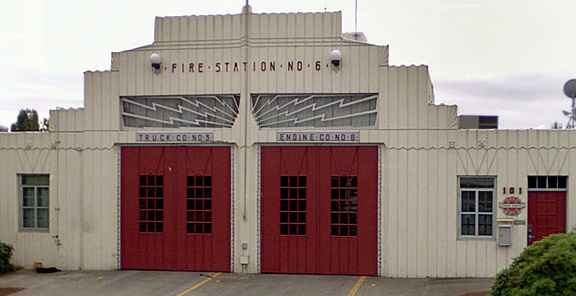
Fire Station #6 101 - 23rd Ave. S., Seattle, WA98144
|
This is an archive of the old Web site for the proposed Holistic Community Health Clinic. Demian designed and maintained this Web site ó including editing text and retouching images ó from 2012 until the campaign was put on hold in 2015. Contact Demian at 206-935-1206 or demian@buddybuddy.com |
 Fire Station #6 101 - 23rd Ave. S., Seattle, WA98144 |
|
Home Page Original Proposal Endorsement Letters Supporters Petition Signatories |
News Building Statistics Natural Therapy Articles Natural Medicine Research |
|
Natural Medicine Research The U.S. Department of Health and Human Services has developed resources regarding complementary and alternative medicine through the The National Center for Complementary and Alternative Medicine (NCCAM) at the U.S. National Institutes of Health (NIH). They undertake research, training, and dissemination of data. Their Web site includes natural health events and details of clinical trials: nccam.nih.gov
Here are selected articles from the NIH Web site concerning definitions, natural medicines and treatments. Naturopathy and the Primary Care Practice
by Fleming SA, Gutknecht NC
Abstract
Full article from the National Institute of Health: Naturopathy
by Smith MJ, Logan AC Naturopathic medicine is an eclectic form of primary health care that encompasses many complementary modalities in the treatment and prevention of disease. Treatment protocols are integrative in nature, combining the most suitable therapies to address the individual patient's needs. Although naturopathic physicians often are referred to as general practitioners of complementary medicine, practitioners share a common philosophical belief in the profession's founding principles. Naturopathic physicians have started to contribute to research and incorporate modern scientific methods into clinical practice, which has served to develop and validate the profession further. In contrast to many other forms of complementary medicine, naturopathic medicine is regulated partially by law. Legislation of naturopathic medicine has worked well in jurisdictions where it is legislated and has led to uniform standards of education and practice. In addition, regulation has helped with integration and naturopathic cooperation with all other branches of medical science. Within licensed jurisdictions, patients receiving naturopathic care can expect the practitioner to be held to high standards, established by state or provincial law. As alternative therapies become more integrated in nature, conventional medicine will face new challenges. Licensed naturopathic physicians are trained sufficiently to play an active role in this new primary health care team. Although the exact role has yet to be determined, the eclectic approach taken by naturopathic physicians may be of benefit in this evolutionary process.
Definition from the National Institute of Health: Naturopathic Physicians: Holistic primary care and integrative medicine specialists
by Litchy AP The use of Complimentary and Alternative Medicine (CAM) is increasing in the United States; there is a need for physician level practitioners who possess extensive training in both CAM and conventional medicine. Naturopathic physicians possess training that allows integration of modern scientific knowledge and the age-old wisdom of natural healing techniques. Naturopathic philosophy provides a framework to implement CAM in concert with conventional therapies. The naturopathic physician's expertise in both conventional medicine and CAM allows a practice style that provides excellent care through employing conventional and CAM modalities while utilizing modern research and evidence-based medicine.
Definition from the National Institute of Health: Natural Approach to Hypertension by Farhang Khosh, ND, Mehdi Khosh, ND
Abstract
Full PDF Report download from the Alternative Medicine Review, vol. 6 #6, 2001: A Phase I Study of Low-Pressure Hyperbaric Oxygen Therapy for Blast-Induced Post-Concussion Syndrome and Post-Traumatic Stress Disorder by Paul G. Harch, Susan R. Andrews, Edward F. Fogarty, Daniel Amen, John C. Pezzullo, Juliette Lucarini, Claire Aubrey, Derek V. Taylor, Paul K. Staab, and Keith W. Van Meter
Abstract
Full PDF Report download from the Journal of Neurotrauma: Hyperbaric Oxygen Ameliorates Worsening Signs and Symptoms of Post-Traumatic Stress Disorder by Benjamin Eovaldi1 and Claude Zanetti2
Abstract
Full Report from the National Institute of Health: |
|
Contact John F. Ruhland, ND, The Natural Health Medical Clinic, LLC; 206-723-4891 On Beacon Hill, just south of downtown Seattle Entire contents © 2024, Demian Web programmer: Demian |